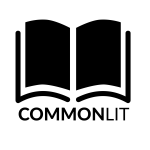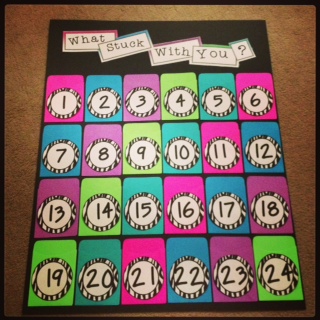Summarizing Strategies
Summarizing Strategies
Purpose: To promote the retention of knowledge through the use of engaging strategies designed to rehearse and practice skills for the purpose of moving knowledge into long-term memory.
 Traditionally summarizing strategies happen at the end of the instructional design process. Have you ever heard the old adage “the last thing you hear is the first thing you remember”?
Traditionally summarizing strategies happen at the end of the instructional design process. Have you ever heard the old adage “the last thing you hear is the first thing you remember”?
Examples:
Closing arguments attorneys give. (You’re better to be last.)
Final statements in a campaign speech.
Last lyrics of a song.
The theory of primacy and recency effect say that the probability of remembering is greater at the beginning and even greater at the end of your lesson. Based on brain based research, primacy and recency psychological theories reveal that information that is most recently presented is the information our brains retain best. For this reason it is vital to have a powerful closing strategy that will help students recall what they have learned during a lesson. As brains have physically altered with the digital age, teachers must now be mindful of summarizing practices that will have the best effect on a student’s learning. Because summarizing is where teachers get the most powerful results for student recall, teachers have shifted to a distributive practice of summarizing which is now done throughout the lesson rather than just the end.
Using this information, Learning Focused lessons use a distribution model for summarizing which includes a variety of summary strategies throughout the lesson rather than just the end.
Overview Summarizes
Overviews can happen both at the beginning and end of a lesson. As a front-loading strategy they can be in the form of agendas, advance organizers, a syllabus, video clips, and condensed forms. As a summary synopsis at the end of a lesson they can be in the form of tickets out the door, graphic organizers, reaction guides, and written reflections. Overviews are a way of summing up to students what they are about to learn and/or outlining what they have learned. Students like to know what they are there for and overviews help give them that focus.
Distributive Summaries
Distributive summaries should happen all through the lesson. Chunking, in psychology is a phenomenon whereby students group responses when performing a memory task. In teaching, we chunk our lessons into parts that make sense to breakdown the content into manageable pieces of information. It is believed that as teachers present their content in smaller chunks with a variety of learning styles, students will better assimilate and retain the information. The chunks become more meaningful to the students. With each chunk should some a summary strategy. (Sample summary strategies are included at the bottom of the page.) Students can now get the 34 percentile gain not once but several times throughout a lesson using the distribution process.
Two ways to ensure distributive summaries happen are through Collaborative Pairs and through Formative Assessments.
Collaborative Pairs
Collaborative Pairs is an organizational tool presented in Learning Focused Lessons. The premise is that is gives all children response times rather than calling on one student. It makes it more difficult for students to get “lost in the cracks”. Students become frustrated and disengaged in classrooms that cannot always meet their emotional, mental, and intellectual needs. Collaborative Pairs allows students to dialogue along the way about what they are learning. It helps them stay accountable to the other learner in their pair. Teachers can focus their attention to the one or two that do not seem to be participating while everyone else is actively engaged. I think most educators will agree that students are social. Collaborative pairs creates the parameters of the social setting for learning.
Formative Assessments
Formative Assessments support learning during the learning process. They are used by the teacher as an informative tool to the teacher as an indicator of student’s mastery of skills and they help direct teachers in the decision making about future instruction. They can be quick checks and do not take an inordinate amount of time. The time they take from a lesson is well worth the information the teacher gathers and the retention student’s gain.
Formative assessments should in turn help summarize the chunks of information being presented to help assess what the student learned in that portion of the lesson. Find some suggested Formative Assessments at the bottom of the page.
Summary Point Writing
Reading Foundations training refers to summarizing as getting the gist of a text. Likewise, summary point writing is recorded evidence that the learner has gotten the gist of the content. Summarizing is giving the most important “facts” of the content. This type of summary might also use a quote from the text, but the quote should be representative of the text’s main idea or point. When using text as the content, summary point writing is a great strategy fro using evidence from the text which one of the three shifts in the English/ Language Arts for the Common Core.


























